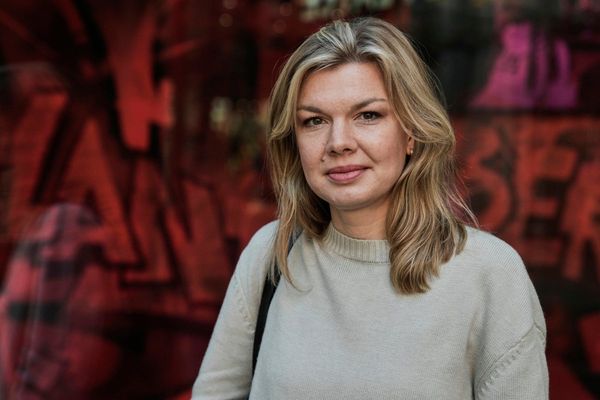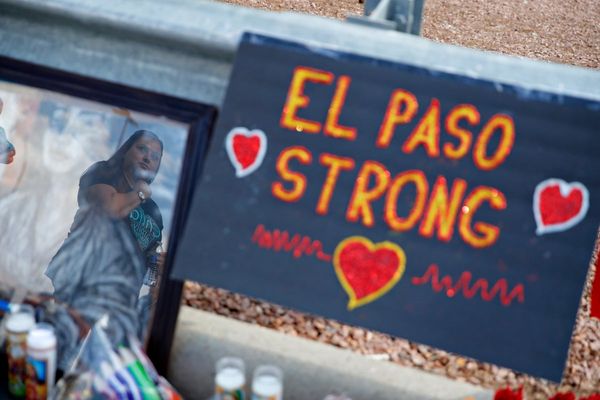
It has been 10 months since Russian forces began their invasion of Ukraine, with the apparent aim of overthrowing President Volodymyr Zelenskyy's government. Since then, tens of thousands of people have been killed, and more than 7.8 million Ukrainians have sought refuge across Europe.
Ukrainian refugees have demonstrated extraordinary resilience and captured the world's attention while making the treacherous journey out of their home country and into neighboring countries like Poland, Romania, Slovakia and Moldova. Many children on their backs and helped elderly people reach safety, prioritizing the safety of the most vulnerable in their community before themselves.
It didn't take long for the EU to come to their aid with the Temporary Protection regime that grants Ukrainians the automatic right to stay and work across its 27 member nations with health care, education, shelter and financial support for up to three years.
The immediate support and solidarity given to the Ukrainian crisis in Europe were impressive, but it leads to reasonable questions about why the EU never offered these services over the past few decades to millions of refugees from the Middle East and Africa who traveled thousands of miles for protection only to be turned away at Europe's borders.
In a season when one of the world's largest religions celebrates the birth of a child in Roman-occupied Palestine more than 2,000 years ago — whose family can reasonably be described as homeless refugees — these questions carry a special resonance.
During the Ukrainian refugee crisis this year, hundreds of Syrian refugee men and boys were deported from Turkey back into an active war zone between February and July. Last winter, between 2,000 and 4,000 migrants — many from Syria, Iraq and other parts of the Middle East — were also forced to camp in freezing conditions in the border areas of Poland and Belarus.
"The message that European countries have been delivering for years is that they have the power and willingness to open their doors to refugees, but only if those refugees look like 'Europeans,'" three experts from Harvard's School of Public Health said in a report about the double standard in refugee treatment earlier this year.
While the double standard applied to Ukrainian refugees was frustrating, it had an undeniably positive side effect: Refugees from Afghanistan, Eritrea or Iraq were back in the headlines, for the first time in months or years.
The discrimination at the border didn't seem to reflect the migrants' geographical origins so much as their racial and ethnic backgrounds. For example, many African students studying in Ukraine during the invasion reported waiting at the Polish border in freezing temperatures while white Ukrainians went ahead of them. Also facing harsh discrimination at border crossings were Ukrainian Roma women — an ethnic minority persecuted for generations across Europe — who were aggressively removed from refugee-dedicated rooms in Romania.
This discrimination was no surprise to many from the global south who have experienced racism and xenophobia in European nations for decades. Right-wing politicians in Europe have routinely used nonwhite refugees as scapegoats, blaming them for economic decline or higher crime rates in an attempt to fear-monger and craft harsher immigration policies that seem uncomfortably reminiscent of Europe's darker past.
While the double standard for refugees this year were frustrating and undoubtedly painful for many, it also had an undeniable effect in terms of renewed global interest in other refugee populations that haven't been discussed in headlines for years. It was the first time concerns about people fleeing from Afghanistan, Eritrea or Iraq had made headlines in the West for months, or perhaps years.
After almost 12 years of war, the Syrian people still comprise the largest refugee population in the world, with more than 6.8 million having been forced to flee their country since 2011. Syria has been called the "worst man-made disaster the world has seen since World War II," yet for many people in Western Europe or North America, it has almost become background noise. .
There's a reason for this, and it's too simplistic to say that Americans and Europeans simply don't care. It may actually be true that we are incapable of imagining the suffering of millions of people. Paul Slovic, a psychologist at the University of Oregon, spent years researching the question of why the world so often ignores large-scale atrocities and mass suffering. Slovic explained that as the number of victims in a tragedy increases, our empathy and willingness to help usually decreases, in a process he calls "psychic numbing."
He used Syria as a case study. As almost everyone reading this will remember, in 2015, a photo of Aylan Kurdi, a young Kurdish boy who drowned off the coast of Turkey after fleeing Syria, went viral and made headlines for weeks. More than 20 million people viewed the image on social media, according to Slovic's study, which analyzed the reaction to the photograph.
"Since 2011, the ... death toll in Syria was relentlessly climbing to hundreds of thousands," Slovic said in an interview with Vox in 2017. "Suddenly, we see this little boy washed up on the beach, and it woke people up."
People around the world began to pay attention to the war in Syria — which by then had been going on for four years — and the perils faced by refugees. As with the Ukraine war in early 2022, search results and donations for refugees spiked significantly.
How long did that wave of empathy last? By Slovic's reckoning, less than a month.
"The day after that photograph appeared, donations [to the Red Cross] went from $8,000 to $430,000 — because of the photograph. Then we could see over time how ... it stayed elevated for about a month or so, and then it went back [down]," he explained.
A year after Aylan's photo went viral, there had been minimal change in the treatment of refugees — more than 2,510 refugees died in boat-related accidents between January and May of 2016, leading Aylan Kurdi's father to proclaim, "My Aylan died for nothing."
"Refugees challenge the assumptions of the modern idea of a nation-state," says Sarah Aziza. When millions of people flee across international borders, "It shows how fragile and arbitrary those borders are."
Many people also feel they are powerless when it comes to helping refugees or that no available solutions will work, and that's not exclusive to war-related situations. This same phenomenon was apparent after natural disasters like Hurricane Katrina in 2005 and the 2010 earthquake in Haiti, and even during the COVID pandemic. For a few weeks we may donate money, share news articles and express solidarity with those suffering but, ultimately, we feel that nothing we can do really matters: Too many people are struggling, and we can't possibly help them all. That provokes negative thoughts and emotions and leads to withdrawal, according to Slovic. "The warm glow you get from helping gets hijacked by the negative elements in the picture," he explained in the Vox interview.
So we stop. We retreat and try not to think about it, and then move on to the world's next catastrophic event.
Sarah Aziza, an Arab American writer who has lived and worked in Saudi Arabia, Algeria, Jordan and the West Bank, says journalists are uniquely positioned to spark change for refugee populations by sustaining compassion. She spent two years reporting on Syrian refugees in Jordan in 2015, focusing on their mental health and integration into a new environment.
"I think continuing to tell [refugee] stories and telling them in fresh, human ways is our best shot at keeping compassion going," she says. "But also, the generation of compassion is not the final answer." According to Aziza, part of any genuine reckoning with the struggles of refugees requires the realization that our current nation-state system was created to exclude specific populations, and can offer no sustainable pathway to solving the global refugee crisis.
"Something I wish people talked more about is how refugees challenge the assumptions of the modern idea of a nation-state," Aziza says. "We haven't had nations for that long, and when people are being pushed around borders, it shows how fragile and arbitrary those borders are and how inadequate they are."
Refugees, she says, are constantly being pushed around, shoved from one nation into another, leading to a series of political emergencies and stopgap measures. "Suddenly, another nation has to deal with them, and they don't want to," she explains.
Often, refugees travel across the nearest border into a country that likely has the same racial and ethnic makeup as their homeland, yet still struggle to find a place in their new environment. Aziza recalls conversations with Syrians in Jordanian refugee camps who said their host country had been welcoming but they just wanted to go home. Both countries speak Arabic as their main language, and have majority-Muslim populations with significant Christian minorities. Before World War II, they made up a part of the Ottoman Empire called Bilad al-Sham, or "the land of Shem," one of Noah's sons. But with the enforcement of British and French mandates in the region in the 20th century, and the rise of nation-states globally, they were forced to distinguish themselves.
As Aziza puts it, "This poses the question for us about what nationhood means, what belonging means."
For many people in developed Western nations, these questions may feel abstract or distant from everyday life. But wherever we live, we may face becoming refugees due to climate change sooner than we think.
If the flooding in South Asia, extreme heat waves in North America and Europe, and wildfires in Australia are any indication, a large proportion of the world's population is at risk of having to leave our homes to seek safety somewhere else. In 2020, the New York Times found that 1 percent of the world was constituted as a barely livable hot zone. By 2070, that area will rise to 19 percent, potentially affecting billions of people.
Migration will increase year after year with or without catastrophic climate change, but the scale will increase substantially as the climate changes, according to the Times model, which predicts that in the most extreme scenarios, more than 30 million migrants from Central and South America may head toward the U.S. border over the next 30 years.
It's understandable for us to feel helpless in the face of the onslaught of daily news, which is why it cannot be up to individuals to solve these systemic issues. Our future as a global society will depend on sustained compassion as a social and institutional practice, not on momentary waves of emotion. The world is in desperate need of systemic policy change that moves beyond the arbitrary restrictions on movement set by nation-states — change that also cannot entirely depend on international NGOs or independent agencies.
If the crises in Ukraine and Syria can provoke a global realization that refugees are not "other" or "exceptional" but people like ourselves, facing circumstances that will ultimately affect us all, that will be an unexpected benefit of this tragic historical episode.







